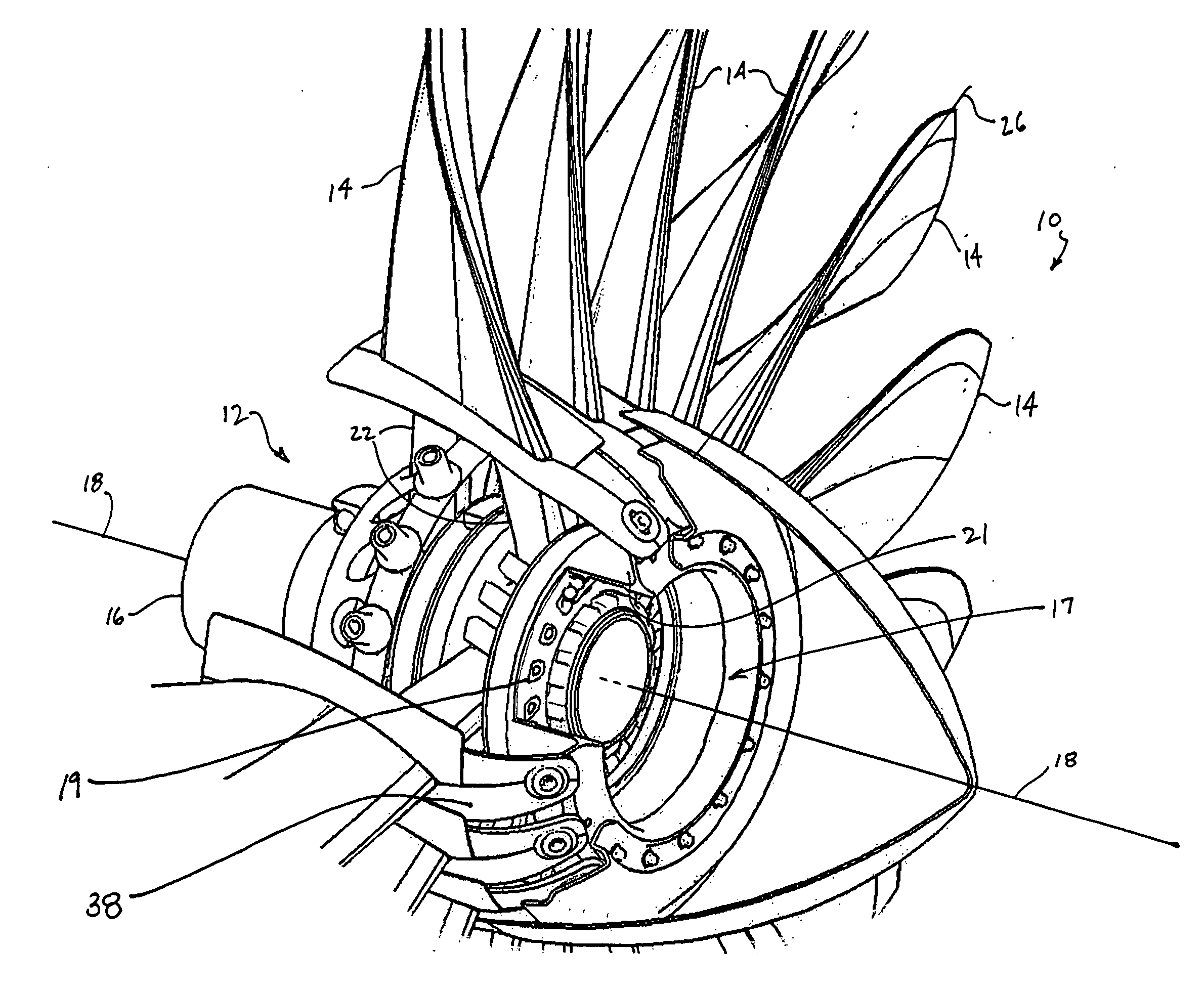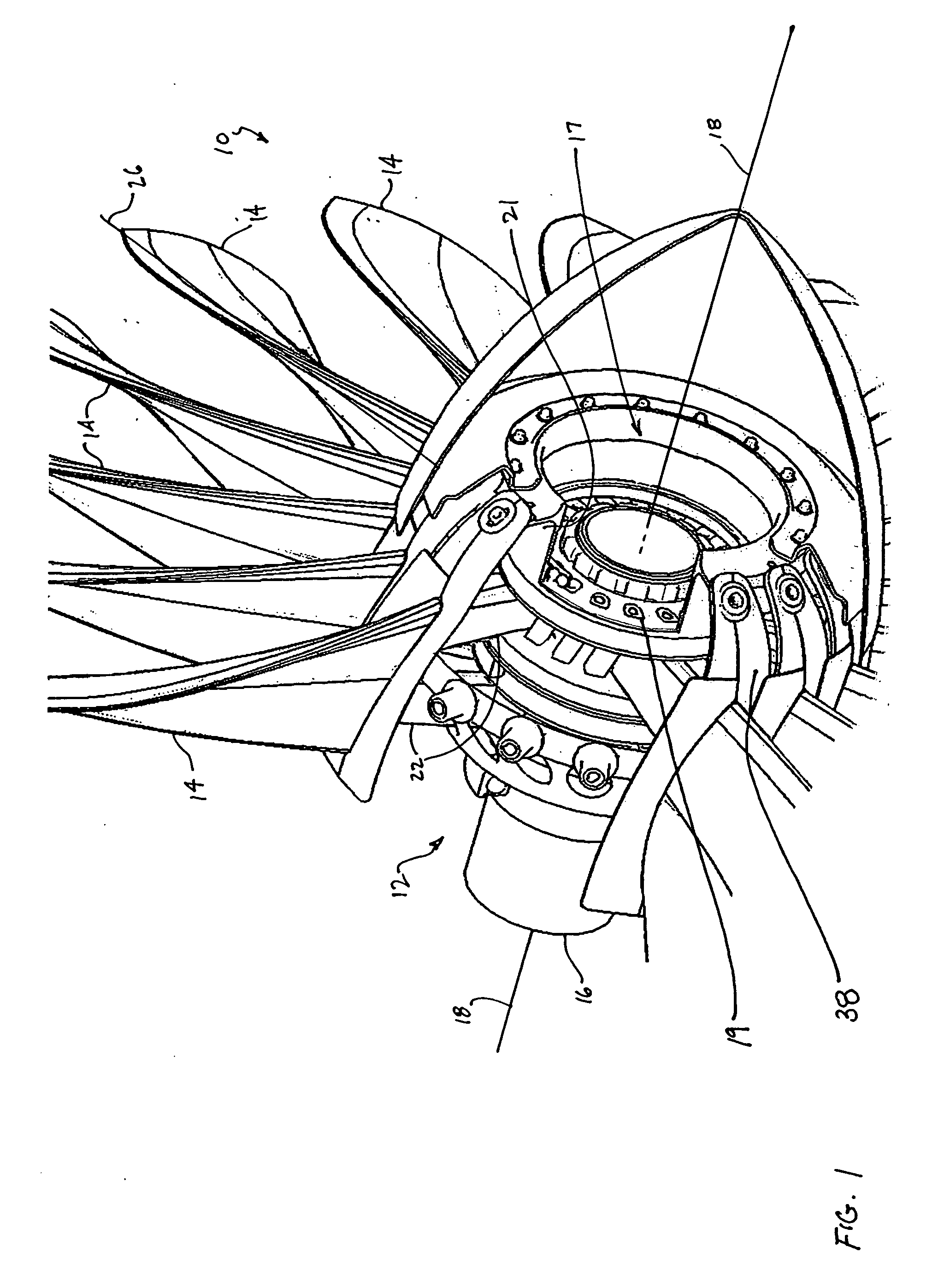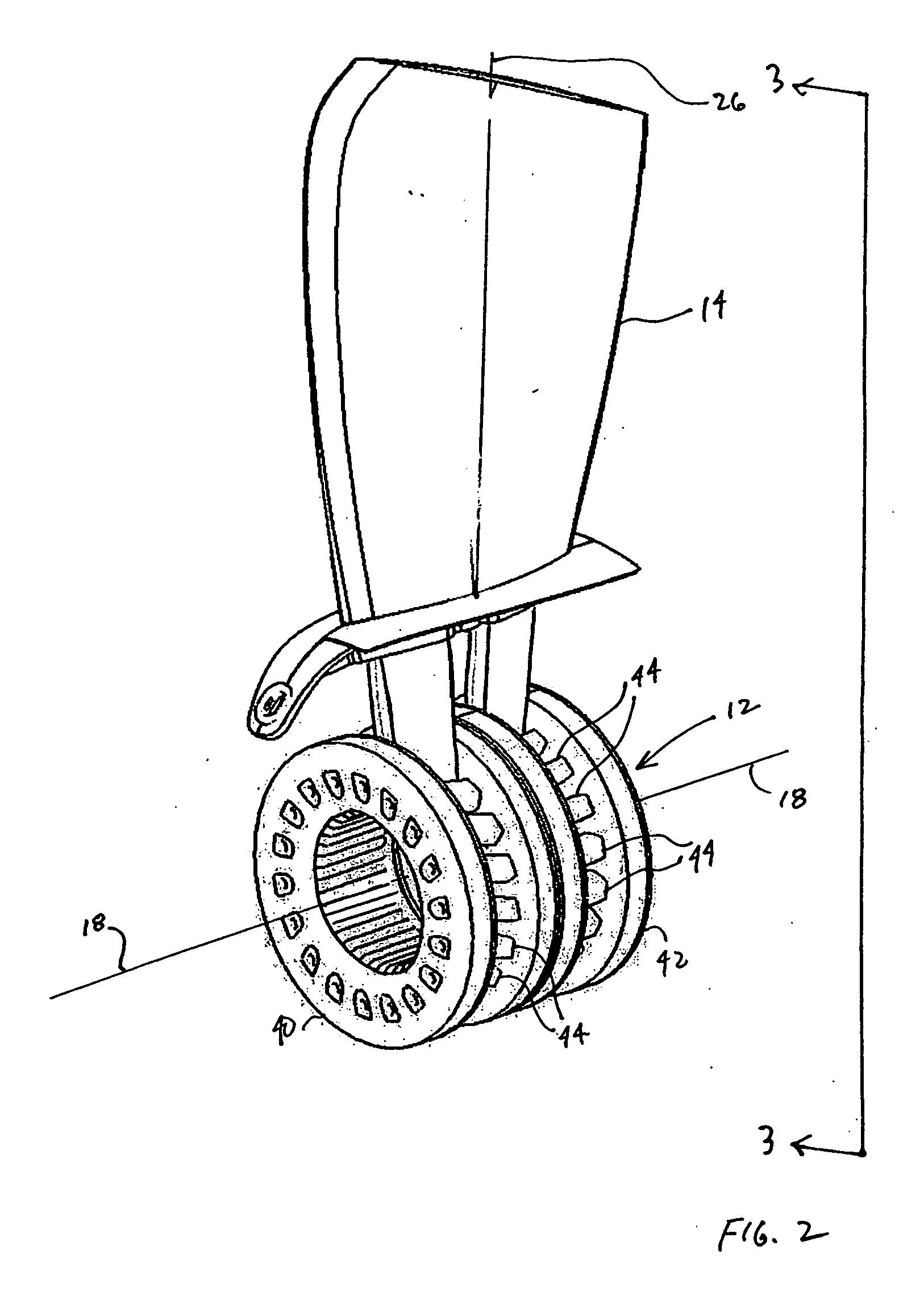Variable pitch rotor blade with double flexible retention elements
a technology of flexible retention elements and rotor blades, which is applied in the direction of rotors, marine propulsion, vessel construction, etc., can solve the problems of significant twisting or turning forces, blades that are inclined towards undesirable flat pitch positions, rotor overspeed conditions, and potential blade loss, so as to reduce the drastic response of the device, reduce the power-producing capacity of the propulsive device, and reduce the effect of ctm forces
- Summary
- Abstract
- Description
- Claims
- Application Information
AI Technical Summary
Benefits of technology
Problems solved by technology
Method used
Image
Examples
Embodiment Construction
[0030]The present invention utilizes a configuration of associated independently controllable support members to vary the positions of rotor blades. Although only two support members are shown for each rotor blade, it should be understood that any number of support members may be used to control a rotor blade. In propulsive thrust devices, the positions of the rotor blades are variable primarily to optimize the angular orientation of part or all of the airfoil surface relative to local air flow direction(s) along the length of a rotor blade developing propulsive thrust. Because the air flow direction changes with operating condition, adjustment of blade pitch angle can provide significant increases in propulsive efficiency resulting in greater fuel economy. Although the propulsive thrust devices referred to herein are referred to as aircraft engines, it should be understood that any type of device having a rotating blade is within the scope of the present invention.
[0031]Referring t...
PUM
 Login to View More
Login to View More Abstract
Description
Claims
Application Information
 Login to View More
Login to View More - R&D
- Intellectual Property
- Life Sciences
- Materials
- Tech Scout
- Unparalleled Data Quality
- Higher Quality Content
- 60% Fewer Hallucinations
Browse by: Latest US Patents, China's latest patents, Technical Efficacy Thesaurus, Application Domain, Technology Topic, Popular Technical Reports.
© 2025 PatSnap. All rights reserved.Legal|Privacy policy|Modern Slavery Act Transparency Statement|Sitemap|About US| Contact US: help@patsnap.com



